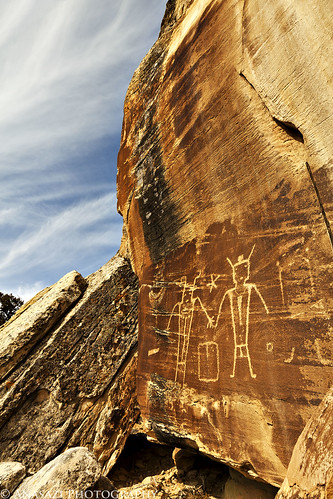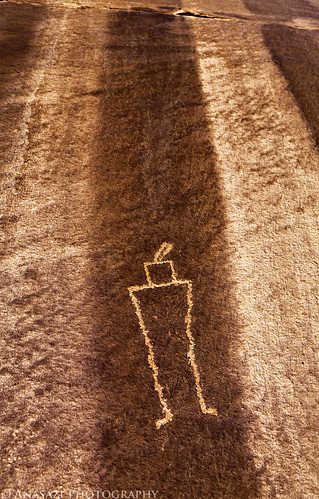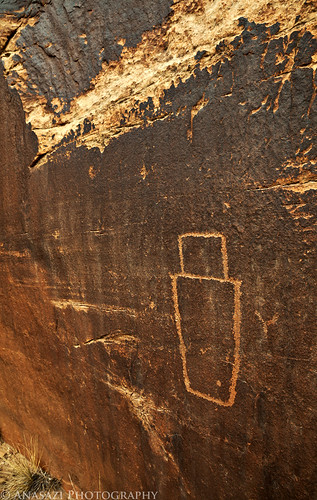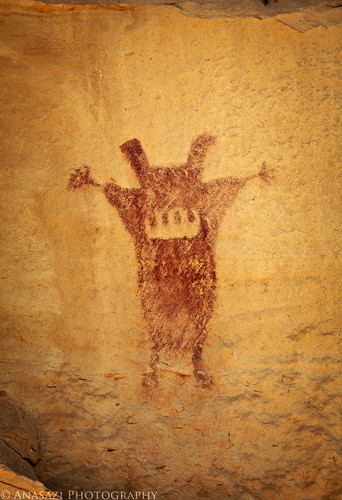There are many spectacular petroglyphs located at the McConkie Ranch in Dry Fork, but this one really seemed to stand out to me as we hiked past it on our way to visit the Three Kings. On our way back, the sky had cleared up just enough to show some blue and I took a few photos of it that I think turned out well. This is probably my favorite of the bunch.
Striped
A simple Fremont anthropomorph is carved perfectly between two lighter colored vertical stripes on the sandstone in North Wash. This figure is part of a larger panel of petroglyphs near Hog Springs.
Sun Carrier
The Uinta Basin in Northeastern Utah features some of the finest rock art in Utah and a very distinct subdivision of the Fremont Style known as the Classic Vernal Style. The Sun Carrier panel, also known as The Three Kings panel has been called the greatest petroglyph panel in the world. While that description might be just a little over the top, it absolutely has to be up near the top of that list. This panel is in a very unique location on a sandstone pillar about two-thirds of the way up the cliff from the canyon floor. Not only are the human-like figures very large and lifelike, they are also highly detailed and decorated. It also appears that there is also some red pigment left on the panel, especially on the large sun-like figure and the central human figure. It makes one wonder just how much paint there may have been on this panel when it was created that has weathered away…
I would like to extend my thanks to the McConkie Ranch for allowing the public onto their property so that those of us who enjoy viewing rock art can experience the many fine petroglyphs located here. I encourage anyone who is interested in rock art to make the trip up there to view all the spectacular rock art…you won’t be disappointed!
Lonely Square Anthropomorph
While exploring a small side canyon off of Indian Creek I came across this anthropomorphic petroglyph all by itself. The square and tapered body reminds me of the many Fremont figures I have seen further north, but the Fremont are not thought to have lived in this area. Perhaps the Anasazi copied the style or maybe the Fremont passed through or camped in this area while hunting? While we will never know the exact origin of this petroglyph, it’s still an interesting yet very simple figure.




